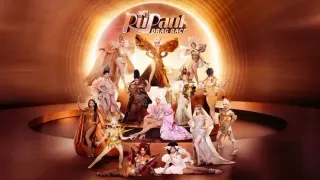May 15, 2015
I Am Big Bird: The Caroll Spinney Story
Michael Cox READ TIME: 4 MIN.
The long-running television show "Sesame Street" started with the premise that if you hold children's attention you can educate them. For the first time, a television program launched onto the small screen with a script, a curriculum and educational goals. Conversely, the educational effects of a show were studied and evaluated as never before.
To make this possible, the master puppeteer and entrepreneur Jim Henson was asked to create characters like Big Bird and Oscar the Grouch to interact with real children on the screen. These characters, especially Big Bird, have become some of the most well-known children's figures in the world. As Malcolm Gladwell said, "the creative geniuses ['Sesame Street'] attracted, people like Jim Henson and Joe Raposo and Frank Oz... intuitively grasped what it takes to get through to children."
Still, one of the original performers has persisted like no other, though he is little known and seldom talked about because he has quietly created everyman characters amidst the alphas that surrounded him.
In "I Am Big Bird: The Caroll Spinney Story," we meet the man behind Big Bird and Oscar the Grouch through interviews, historical footage and never-before-seen home movies in 8mm and on video.
Big Bird was designed from one of Henson's drawings by Kermit Love. The 8'2" bird can sing, dance, roller skate and write poetry, but he can't fly, and for over 45 years (while the rest of us have grown up with him) he has remained a six-year-old boy. He and his teddy bear live in a large nest behind the brownstone on 123 Sesame Street.
Spinney had plenty of television experience and a genuine love of puppetry, which made Henson want to work with him for years before they came together in 1969. But Spinney hated New York when he first moved there. Early on he wanted to quit the show, but he stuck with it. He persisted as an individual surrounded by dominant personalities, and even though replacement puppeteers have been on set since the late 1990s, Spinney still does the show and has no plan to retire.
Big Bird has persisted even as the show evolved into a new style, and Elmo started to dominate the screen time.
This movie gives us the impression that in the early days of "Sesame Street" a few very talented, charismatic men developed legendary characters through hard work and long hours in a competitive work environment. But Spinney didn't get caught up in the aggression. His characters stood apart, aloof and somewhat solitary.
Caroll himself is a very social person, but since he was happy and fulfilled in his personal life, he could keep his work and his social life separate. Caroll was never one of "the boys," and (although the film doesn't explore this) it's notable that while the other great figures of "Sesame Street" moved into "The Muppet Show," Caroll never left the original program.
Much of this has to do with the effectiveness of his characters. Big Bird and Oscar the Grouch spoke to very young children. His characters didn't have the irony and wit that crossed over to adult audiences. It was Caroll's idea to make Big Bird a child, and the character's humor comes from the fact that he is always completely sincere.
The evolution of Oscar the Grouch was much rockier. Writer/director Jon Stone conceived of Oscar as the dark side of child psychology. This character was to embody all the traits that children weren't supposed to have and to do the things those children weren't supposed to do. He was not "nice" and "polite;" he lived in a trash can, and he loved garbage. Still, Spinney insisted on giving his character a "heart of gold" and making him loveable, in spite of his subversive and antisocial qualities.
Stone and Spinney didn't see eye to eye on this and other issues, so there was a rivalry between them on set. Henson always stood up for Spinney, but we get to see a moment where even Henson may be reacting to Spinney with a little bit of passive aggression. In his character voice Henson says, "We all have to stay and keep working, but Caroll gets to go home."
There are no deep, dark secrets in the life of Caroll Spinney. We get no glimpse into the secret lives of the Muppets, like puppeteers doing drugs and sleeping with each other. (That's not to say that this is a family-friendly documentary; there's definitely some rough language used on set.)
This is simply a portrait of a man with a good heart, a man who was bullied as a child for playing with dolls (or, rather, puppets), and was dominated as an adult in his work environment, but he remained strong.
In the end, Big Bird is such a huge part of our cultural Gestalt that I defy anyone who has not grown up with this immense character to be unmoved by this movie.






